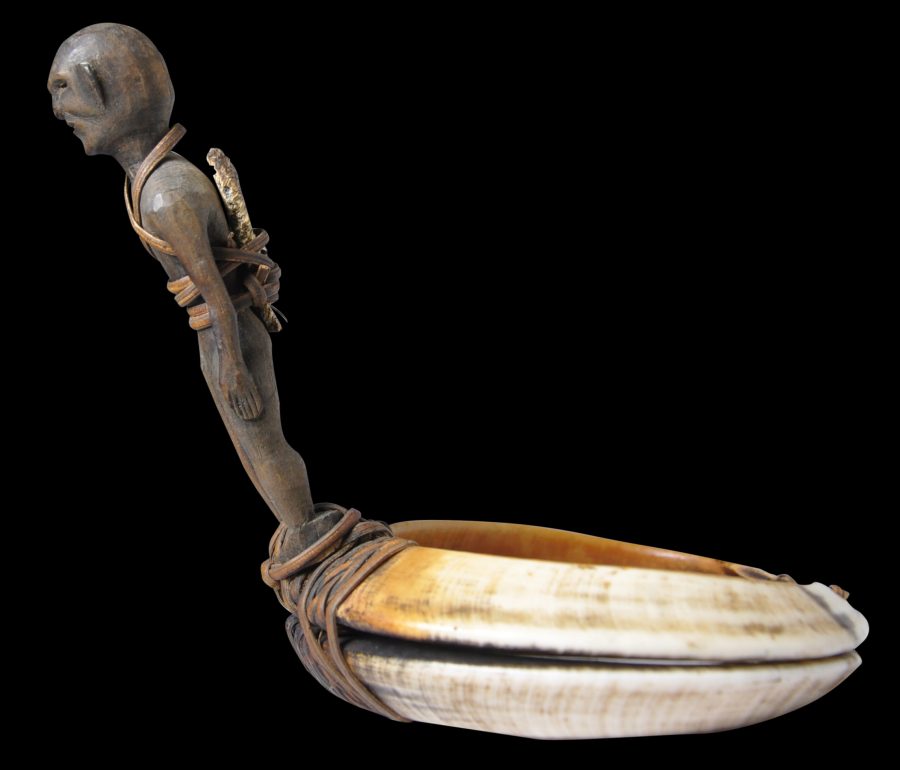The Bontoc and Ifugao peoples of northern Luzon wore armbands such as this example constructed from two pairs of wild boar or pig (sus philippensis) tusks, held together with rattan, and mounted by a carved wooden figure of a standing man.
They were worn on a warrior’s forearm and were associated with headhunting, and certainly conquest. Most probably, the carved figure began life as a handle on a wooden spoon or ladle. Such figurative spoons were used by the Ifugao and Bontoc for ritual purposes. The spoons were handled on a daily basis and were kept in an open basket above the hearth in the family home. Such handling and storage accounts for the patina that many of such spoons developed.
The spoons were regarded as heirloom items and imbued with talismanic properties. Accordingly, warriors, when attacking and raiding rival villages, would take the spoons among other ‘war’ booty, and would cut off the figurative handles from the spoons and attach them to armbands such as the example here, or wore them as charms.
The arm band is in fine condition and with a patina suggesting significant age.
References
Afable, P., et al, Philippines: an Archipelago of Exchange,ACTES SUD/ Musee du Quai Branly, 2013.
Benitez-Johannot, P. (ed.), Paths of Origins: The Austronesian Heritage in the Collections of the National Museum of the Philippines, the Museum Nasional Indonesia and the Netherlands Rijksmuseum voor Volkenkunde, ArtPostAsia, 2007.
Gomez-Garcia, P., ‘Northern Philippine primitive wooden art’, Arts of Asia, July-August 1983.
Moltzau Anderson, E., In the Shape of Tradition: Indigenous Art of the Northern Philippines, C. Zwartenkot Art Books, 2010.
Richter, A., The Jewelry of Southeast Asia, Thames & Hudson, 2000.
Rodgers, S., Power and Gold: Jewelry from Indonesia, Malaysia and the Philippines, The Barbier-Mueller Museum, Geneva, 3rd ed. 1995.





